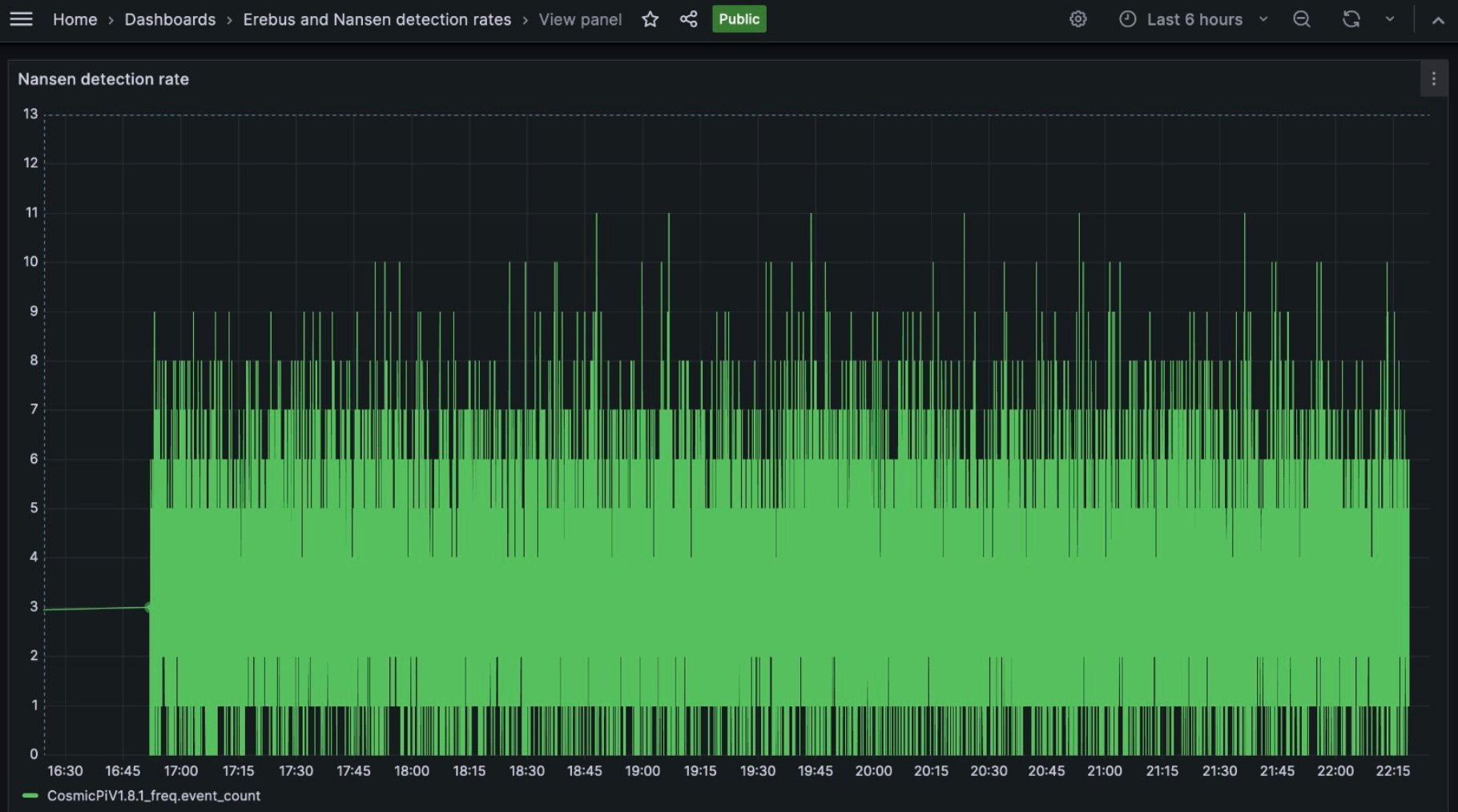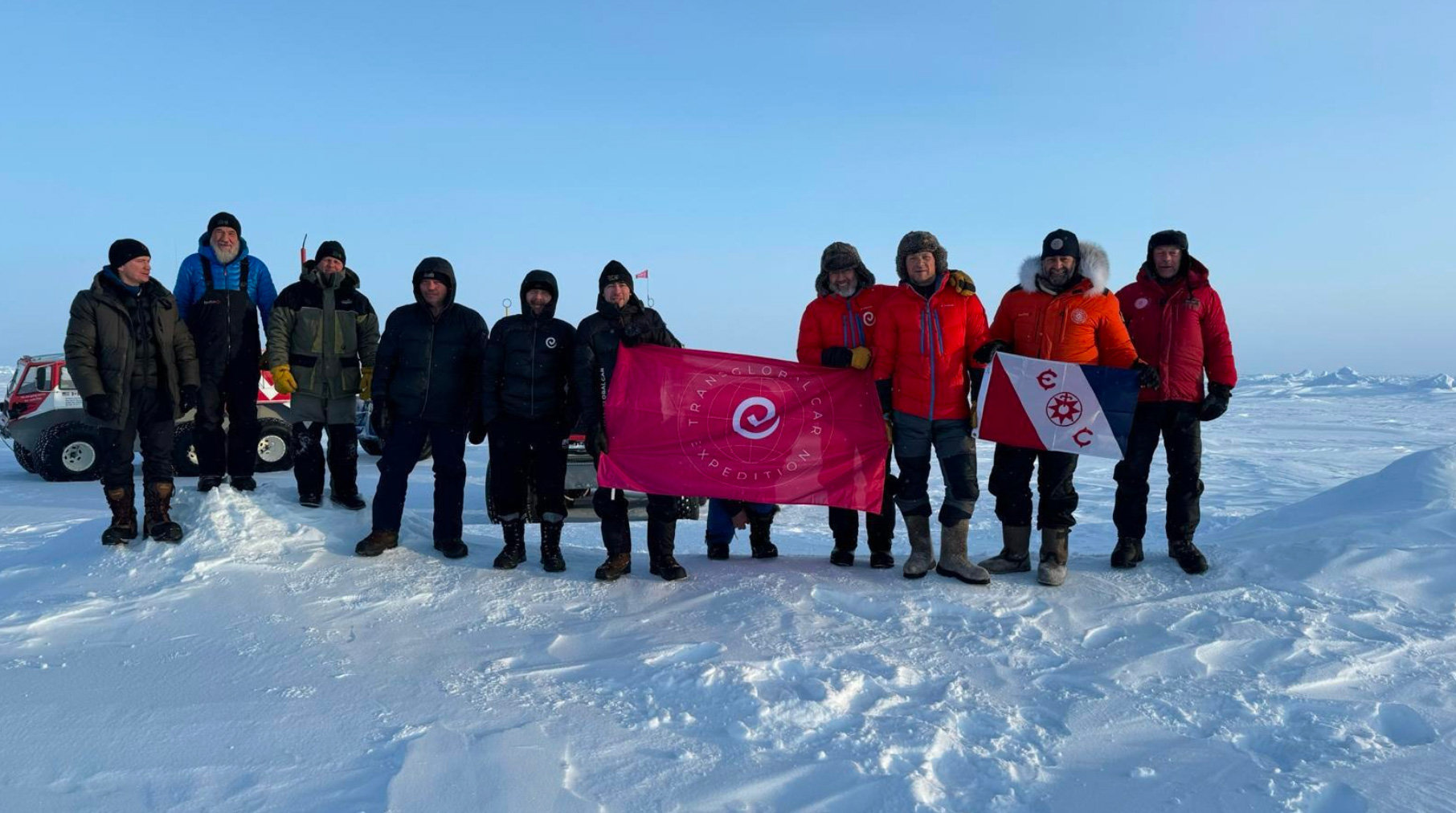Transglobal Car Expedition Achieves Historic North Pole Traverse
On Saturday, April 6th, 2024, at approximately 23:00 Geneva time, the Transglobal Car Expedition successfully crossed the geographic North Pole at 90°N. This remarkable achievement follows four months of challenging cross-continent travel, showcasing the team’s dedication, resilience, and unwavering spirit.
The Transglobal Car Expedition is a trailblazing initiative that is redefining the boundaries of wheeled exploration. It departed northward from New York on January 10th, 2024, beginning an awe-inspiring journey to circumnavigate the Earth. The expedition sees the team traversing both the geographic and Magnetic North and South Poles, before returning back to New York from the south over 18 months later.
The team has now accomplished their most northern milestones of their journey. “Passage of the North Pole is the most difficult stage of our expedition,” says Vasily Shakhnovskiy, leader of the expedition. “Our final approach required all-day travel, traversing 43.6 km before we reached our parking spot at 90°N. Now that we’re here, it’s a little bit of euphoria. This achievement marks the culmination of years of planning and perseverance.”
Their arrival at the North Pole was not just a geographical conquest — but a scientific one. “Using the CosmicPi detector ‘Nansen,’ the Transglobal team recorded cosmic ray data at the North Pole” says James Devine, the CERN engineer who developed the CosmicPi detectors. Etam Noah, Cosmic Pi scientist said “These are the very first measurements of cosmic rays at this latitude and will help researchers understand these unique particles.” These measurements were captured on cosmic ray detectors built at CERN using an open hardware design, specifically adapted to endure the environmental extremes of the North Pole. The Transglobal team remains committed to measuring cosmic rays throughout their expedition, providing valuable insights into these particles at every latitude they encounter.

Cosmic Ray Flux data recorded by detector ‘Nansen” at 90 N.
During the journey, the expedition also took advantage of cutting-edge satellite technology. Several satellite systems, initially ESA’s Sentinel-1 and other commercial systems. Subsequently, at higher latitudes, only COSMO-SkyMed provided daily synthetic aperture radar (SAR) images of the expedition’s route.
These images not only enabled the team to monitor ice conditions and navigate safely through this remote region but also yielded crucial data on ice thickness, contributing significantly to our understanding of polar dynamics and climate change. In addition, the team carried out in-situ measurements of the ice thickness. “This milestone recording of ice thickness at the North Pole underscores the critical need for in-situ measurements in understanding Arctic ice dynamics,” says Christian Haas. “While satellite monitoring offers valuable insights, the scarcity and uncertainties surrounding ice thickness data hinder the compilation of consistent datasets. The measurements taken by the Transglobal team remain the gold standard, providing invaluable validation for airborne and satellite observations.”
The journey to the North Pole represents the culmination of five years of perseverance and dedication. Despite navigating through a global pandemic and facing logistical challenges, the team’s unwavering determination, fueled by the exceptional quality of its members, led to this remarkable achievement. Shakhnovskiy expressed heartfelt gratitude to the team and supporters, stating, “The reason we’ve persevered through every obstacle is the exceptional quality of people on our team, both at the North Pole and across the globe providing support. Your dedication and support have been invaluable.”
As the team rests and regroups at the North Pole, preparations are already underway for the next leg of their journey. With timing becoming increasingly crucial, plans to expedite the delivery of essential supplies and navigate towards Greenland are swiftly in motion.
The Italian Space Agency (ASI), in collaboration with e-GEOS (Telespazio/ASI) is the sole concessioner for the commercial use of satellite data acquired by the COSMO-SkyMed constellation. ASI will continue providing images covering an area extending up to at 200×200 km, to help the expedition select the best route to leave the North Pole and reach Greenland.
Follow the Transglobal Car Expedition’s remarkable journey as they continue to push the boundaries of exploration and scientific discovery. Stay updated on their progress and groundbreaking research by visiting: https://transglobalcar.com/


